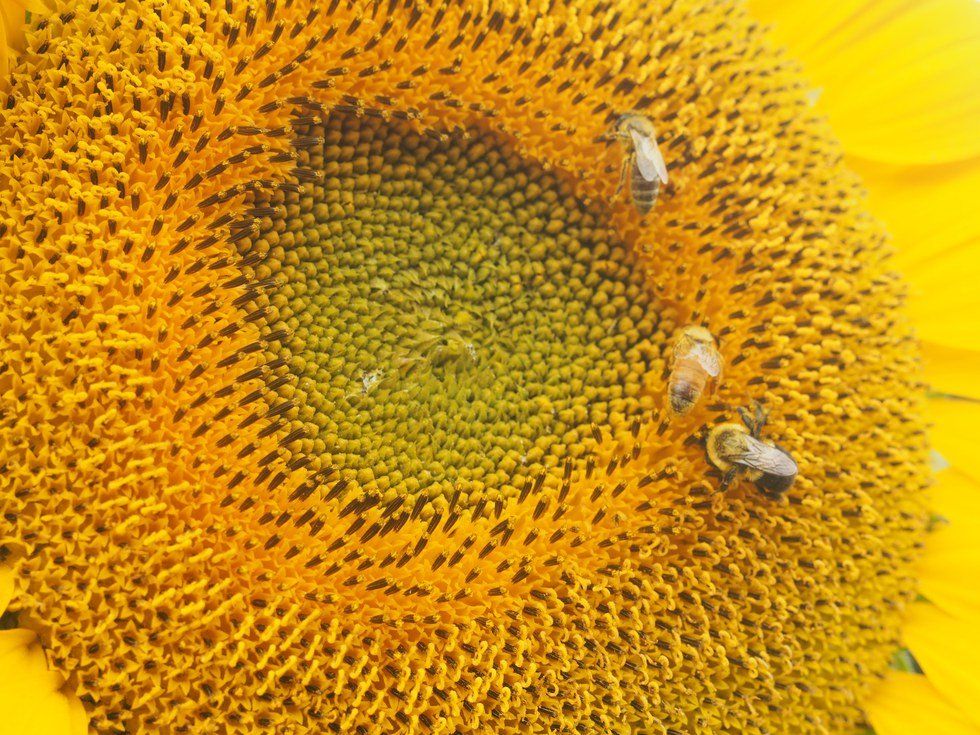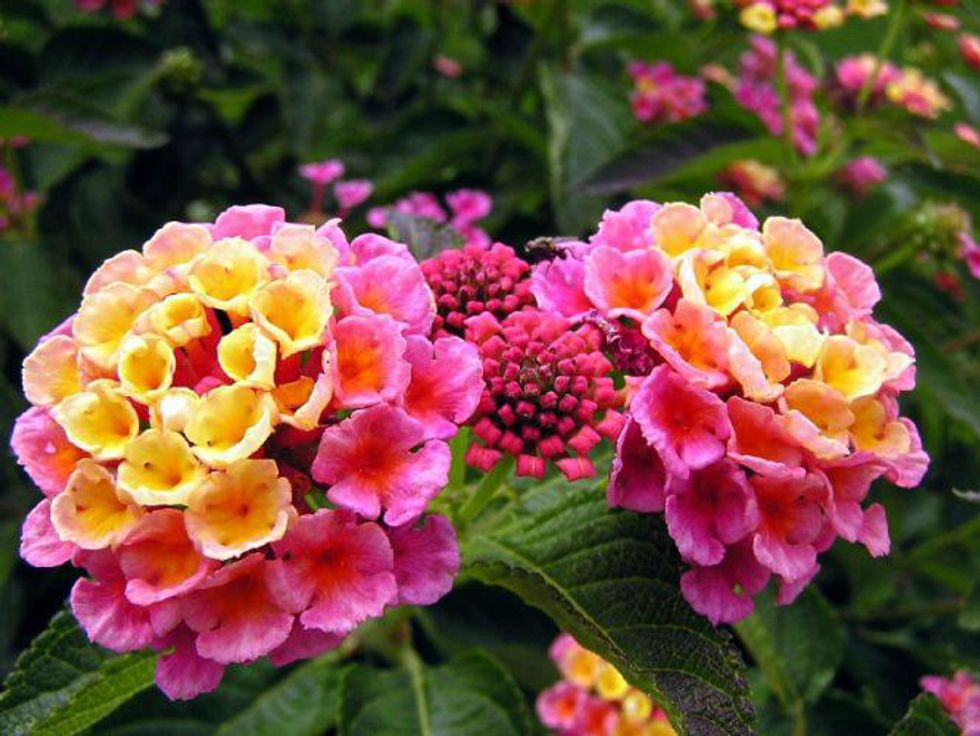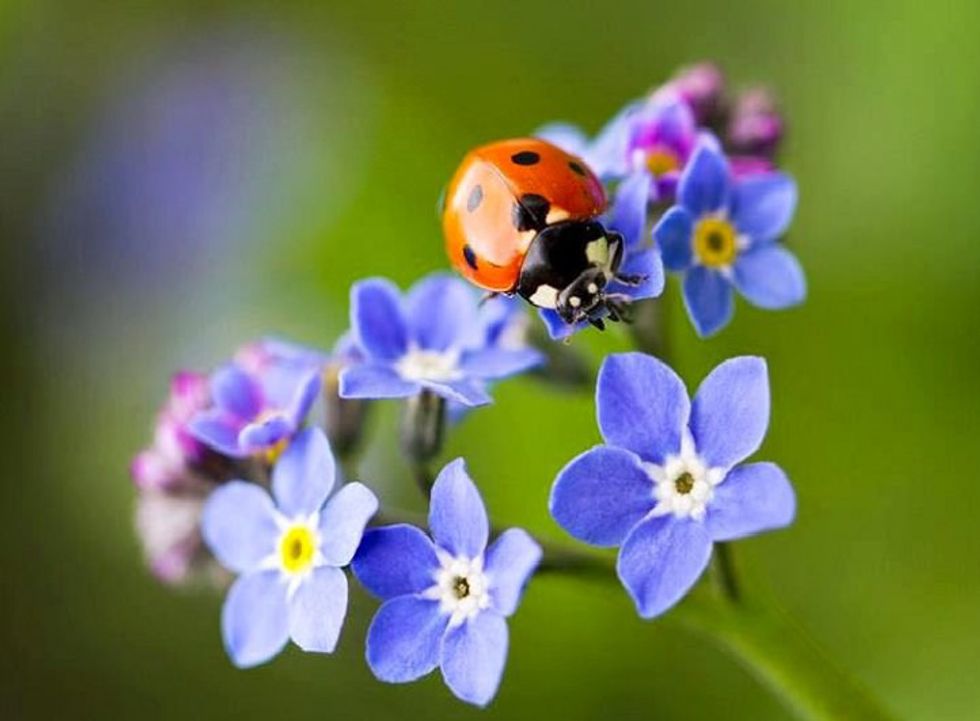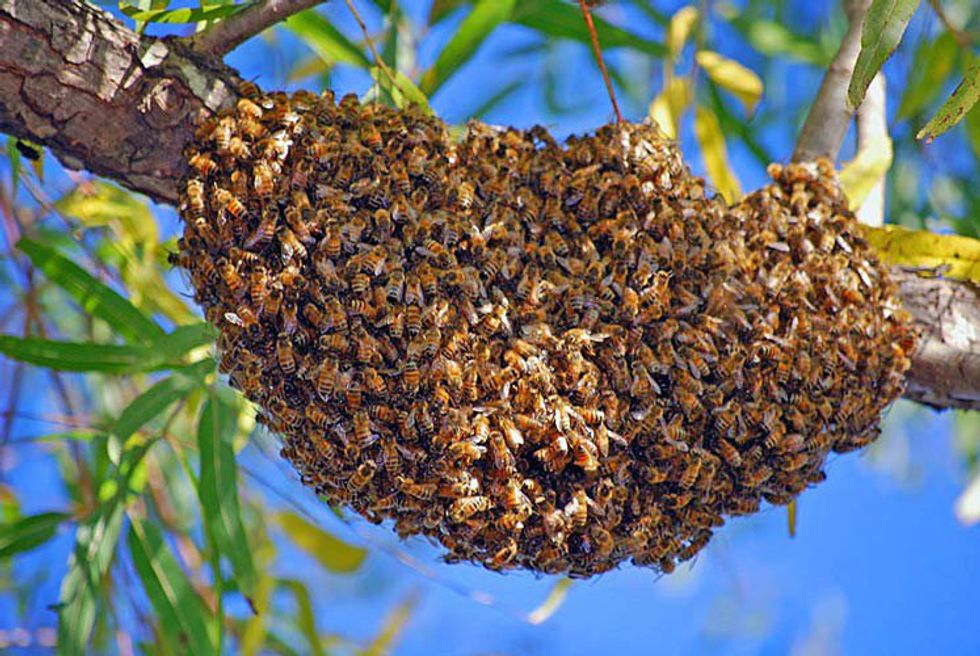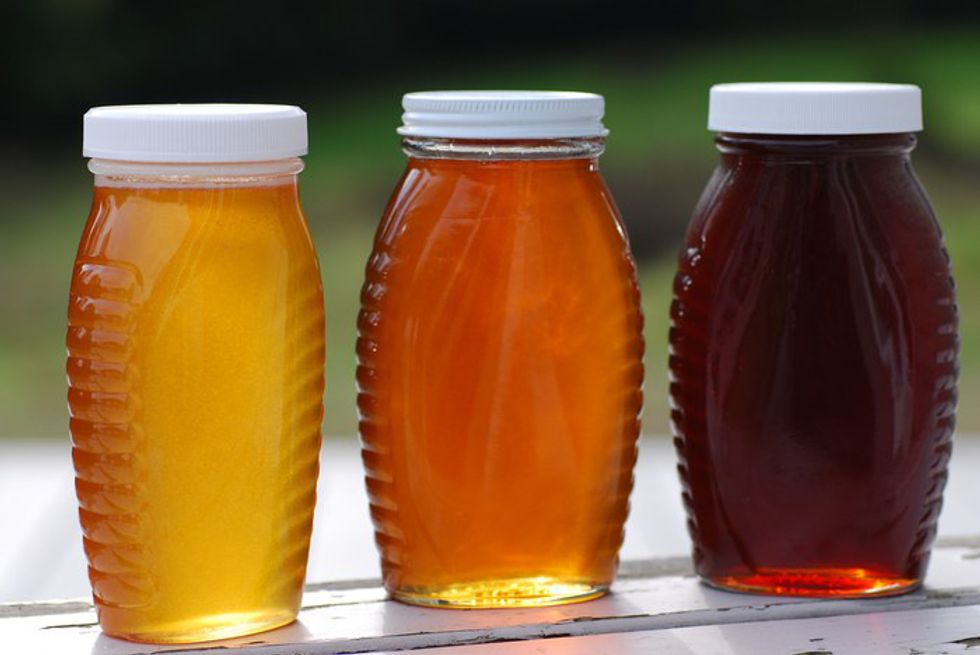Bees are responsible for providing plants with fertilization, traveling from flower to flower and dusting them with foreign pollen and seeds as they collect nectar. Cross-pollination is responsible for more than 30 percent of the world’s crop production and 90 percent of the wild plant population. Since the early 1990s, beekeepers have noticed a mass decline in bee populations both in their honey bees as well as in wild honey bees.
Never fear, you can help save them! Try these simple tips to increase happy buzzing bees.
1. Planting a bee-friendly garden.
Planting a bee-friendly garden is not only beneficial to the
pollinators, but it's also great for you too! "Bee" sure to plant things that bloom
during different seasons to ensure there is plenty of nectar
year-round. Mix bright flowering plants such as foxgloves, borage, bee
balm, lantana, snapdragons, golden rod, daylilies and zinna in your flower beds or vegetable garden to attract bees spring through fall.
Check out your local nursery for more details and flowers in bloom this season!
2. Reduce or avoid broad pesticides.
Every gardener has come across a nasty infestation during their gardening career but you don't necessarily need to turn to harsh chemicals to clear them up. Many pesticides target a variety of insects including honey bees; be sure to avoid using products such as Sevin, Bayer, Bonide (grub beater) and Ortho. Consider instead using biological solutions to solve your infestation. For example use lady bugs to battle aphids and other soft-bodied insects and praying mantis for flies, moth larva and other pests.
Click here for more information on biological pest control and Integrated Pest Management.
3. What can you do about a swarm?
Springtime is upon us, and that means the bees are out of their hive for the moment, creating large masses of honey bees called swarms. Swarming occurs when there are too many queens for one hive, and the old queen leaves the bunch in search of a new home, taking most of the workers along. Do not panic! Bees gather calmly to reproduce, select a new queen and find a new hive location. Beekeepers are on the hunt for swarming bees, relocating them to a more permanent and consistent home.
If you find a swarm, call your local beekeeper; you might get some honey in return!



